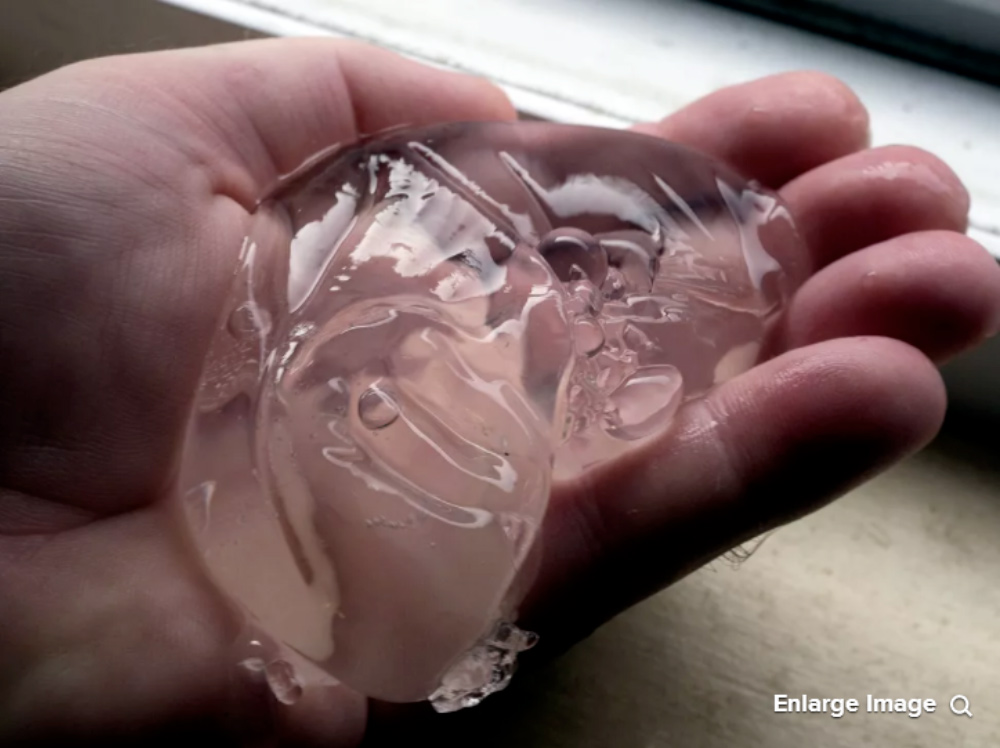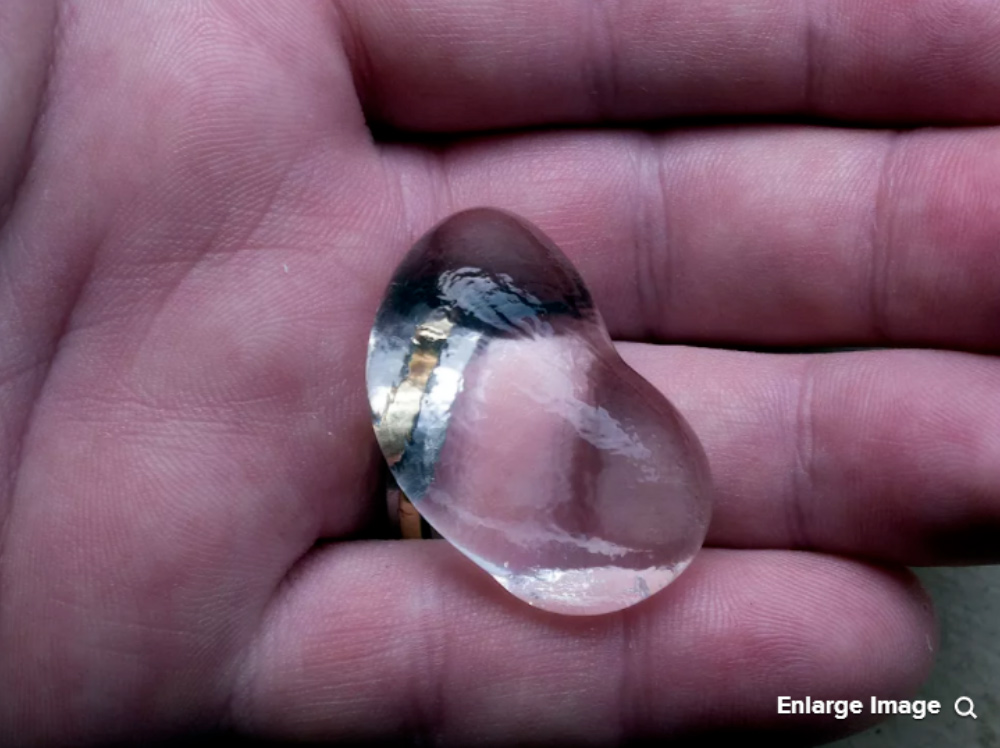Could a modernist food technique create a new, less wasteful way to package water? Appliance Science looks at the curious chemistry of spherification.

A sphere of water created using spherification.
I just drank a cup of water. Nothing unusual there, but this was without a cup or other container. Instead, the water was held in a clear, edible membrane that I popped into my mouth and bit down on. It tasted, well, just like water, because this clear sphere was made just from water and two tasteless chemicals.
I made this strange sphere myself, using a process called spherification. Using the reaction of these two chemicals, I created a tough membrane on the outside of the water that held it in place. In effect, the water became its own water bottle.
Spherification works because of an interesting bit of chemistry. Originally developed by the chef Ferran Adrià at the elBulli restaurant in Spain, spherification uses the reaction of two common chemicals to form a tough, waterproof membrane around a liquid, such as water. Adrià developed the technique as part of his creation of a new type of cuisine that aims to, in his own words, "provide unexpected contrasts of flavour, temperature and texture" by using chemical techniques to produce unusual dishes. He used the technique to produce dishes such as olive oil caviar that convert liquids into solid spheres that burst in the mouth. This new school of cooking is called either modernist cuisine or molecular gastronomy, depending on who you ask.
The first ingredient of our edible water bottle is Sodium Alginate, usually derived from seaweed. This is a long-chain carbohydrate that is soluble in water. In the original plant, it is used to store sugars created by photosynthesis, much like the carbohydrates in bread. When Sodium Alginate is dissolved in water, these long-chain carbohydrates float around on their own: they don't connect to each other. That's because poking out from these long chains is a branch of carbon and oxygen atoms, which chemists call an anionic group, because the oxygen atoms poking out of it have a slight negative charge. The sodium ions are attracted to this, because they have a positive charge. Sodium is monovalent, meaning that it wants to bond to just one of these carbon and oxygen branches at a time.
However, if you add a divalent positive ion to the solution (such as a calcium ion from our second ingredient Calcium Chloride), the structure changes. A divalent ion has two positive charges, and wants to bond onto two of these branches at a time, meaning that it can connect two alginate molecules together. The Calcium is divalent, and replaces the sodium, creating cross-linkages between the long-chain carbohydrates. Connect enough of these together, and this 3D matrix of connected alginate chains forms a gel, a semi-solid impermeable membrane that the water can't pass through. This creates a sphere that surrounds the water.
So, to create a water sphere, you dissolve Sodium Alginate in water, then drop some of this solution into another solution of Calcium Chloride. As the two solutions come into contact, the Alginate and Calcium ions combine, creating a gel surface that encapsulates the water. After letting this set for a bit (so the gel surface can properly form), you remove the drop from the Calcium Chloride solution, and you have a fully formed water sphere, made from nothing but water and the two chemicals.
This sphere will hold the water in place, but it can be easily bitten through or pierced. And the best part is that the membrane itself is edible: it is, after all, just water and a couple of tasteless chemicals. You can pop the entire thing in your mouth, and eat it, gel membrane and all.
This technique is causing something of a stir in manufacturing and water bottling circles: it could provide a waste-free way to contain and transport water: if the entire package is edible, you could just pop the whole thing in your mouth to have a drink. It is still a way away from replacing the water bottle on store shelves, though: the gel membrane breaks down over time, and it isn't as tough as plastic. The large sphere that I created (in the photo at the top of the article) broke just after I took this photo when I tried to drink it, so it isn't going to stand up to the rigors of shipping and storage.

Smaller water spheres created with spherification are stronger, such as this one that stood up to a lot of handling.
It is a step in the right direction, though, which is why a group of students were awarded a prestigious design prize last year for coming up with a neat way to make the membranes tougher by freezing one of the chemicals. The Ooho! uses a tweaked version of this technique to make large, tougher spheres of water. The team that created it is currently working on commercializing the product. So, one day, you will probably be able to buy a drink that comes in its own edible glass.
In my next column, I'll show you how to make your own edible water spheres, and how it can be used for other foods as well, creating fun stuff like wine caviar and orange juice spheres.